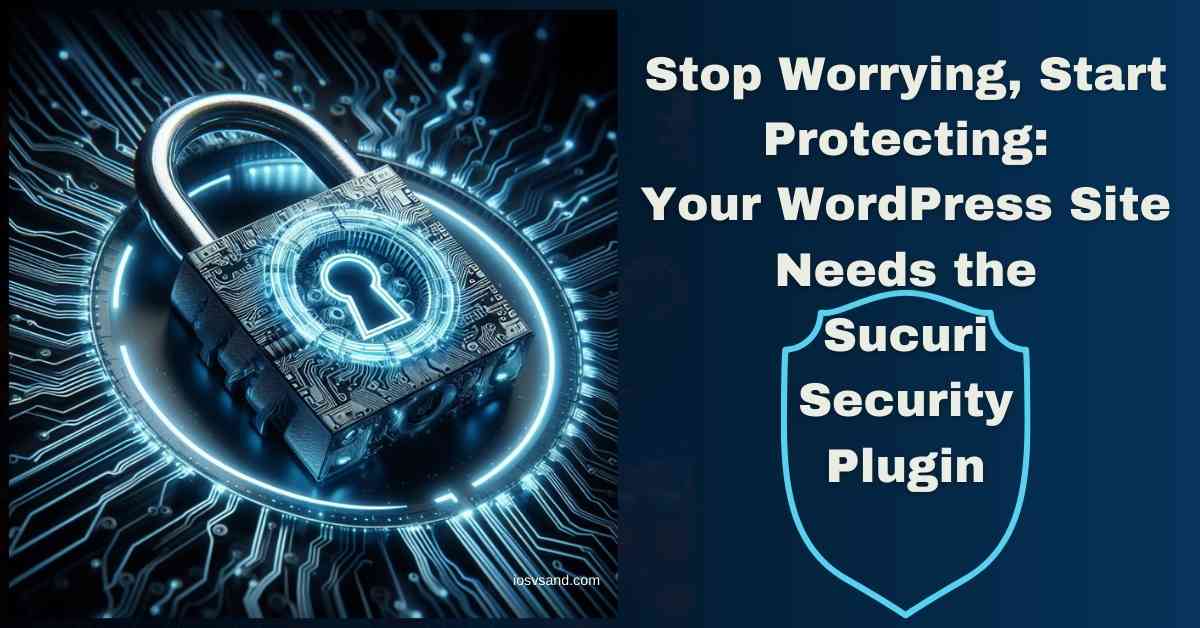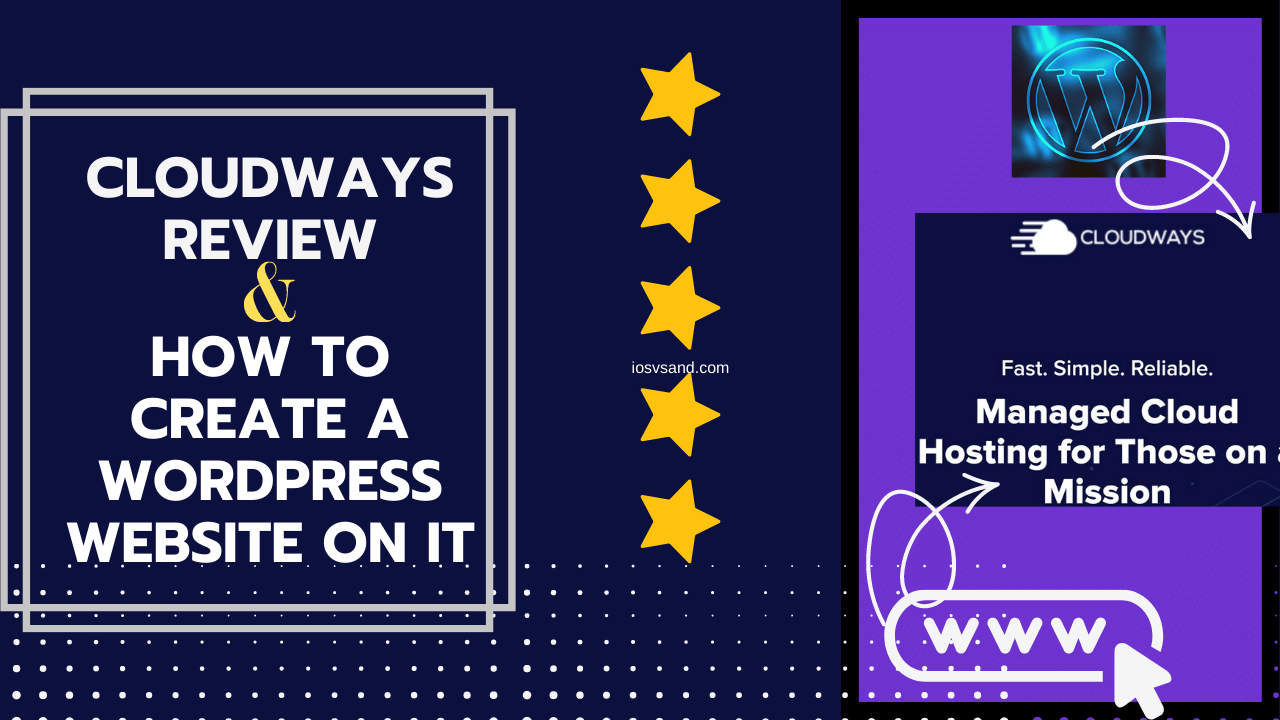Imagine this: your site's protected 24/7 by a team that knows WordPress security inside out.…

Secure Your WordPress Website: Simple Tweaks, Maximum Protection
WordPress Security: Don’t Be the Next Headline
WordPress is a juggernaut. It powers a staggering chunk of the internet. Unfortunately, this success makes it a prime target for the not-so-good guys of the web—hackers, botnets, and those out to cause chaos.
Do you think your small blog or business site can go unnoticed? Think again. Automated attacks don’t discriminate. If you’re running WordPress, you’re on their list.
The Fallout: It’s Not Just About Lost Data
A hacked WordPress site is a nightmare with consequences way beyond a headache:
Data Disasters: Customer info, your content, poof! Leaked passwords can wreak havoc for your users, too.
Reputation in Shreds: “Site Hacked” warnings tank trust faster than anything. Would you do business with a compromised site?
SEO Slap: Google hates security issues. Expect tanked rankings, hurting your site’s visibility long-term.
Don’t Wait for the Break-In to Start Building a Fort
The good news is that you’re not helpless. Proactive security isn’t rocket science (well, mostly). Think of it as smart business insurance. A little effort upfront can save you from a world of pain.
This guide breaks down WordPress security essentials. No fluff, no fear-mongering. These are just actionable steps that make your site a pain for hackers to crack.
Let’s get started. Your digital assets (and your sanity) will thank you.
NOTE: Don’t panic while reading this! A good WordPress security plugin can automate most of these security tasks.
Here Is Your Essential WordPress Security Checklist: Secure Your WordPress Website Today
- Foundational Security Practices
- Essential WordPress Hardening
- Proactive Security Measures
- Advanced Techniques (Optional)
- What to Do if Your Site is Hacked
- Conclusion
- FAQs
- I heard WordPress is insecure. Should I switch to a different platform?
- What’s the number one way to prevent my WordPress site from getting hacked?
- Does website security affect my Google rankings?
- I found a “nulled” premium plugin for free. Tempting, but is it safe?
- My friend’s WordPress site got hacked. Am I at risk too?
Foundational Security Practices
Let’s face it: no one wants to be the next headline about a hacked website. The good news is that some simple, proactive steps make a massive difference in keeping your WordPress site safe. This is the non-negotiable “seatbelt” stuff of website security!
Keep Everything Up-to-Date
Think of software as a living organism. Regular checkups are needed to stay healthy, and updates aren’t just about fancy features; they’re essential for fixing security flaws.
Core WordPress Updates: WordPress rolls out patches to address vulnerabilities. Consider these your site’s security “vitamins.” Never skip them!
Plugins and Themes: Outdated plugins and themes are welcome mats for hackers. Review installed items regularly and update them with any available newer versions.
PHP Updates: This is the language WordPress runs on, and newer PHP versions boost performance and security. Your web host is responsible for this, so check their policies.
Choose Your Plugins Wisely (It’s Not Just About Features)
We all love plugins – they add awesome functionality to our sites! But here’s the thing: not all plugins are created equal, and some can be riskier than others regarding your site’s security and users’ data.
Data Matters: Some plugins collect personal information, such as names, emails, or browsing habits. You must understand what data they gather and how they plan to use it.
Think Ahead, Avoid Headaches: Being selective about plugins from the beginning saves you tons of potential trouble. A privacy mishap or a vulnerability in a plugin can cause serious problems.
Tips for Smart Plugin Choices
- Minimize is Key. Every plugin you add is a potential source of trouble. Ask yourself, “Do I truly need this feature?”
- Reputation Check: Research the plugin developer. Do they have a good track record, frequent updates, and a well-written privacy policy?
- Think Like a User: Would you feel comfortable with how much data a plugin collects? Trust your gut!
Remember: Being picky about plugins is key to having a secure, trustworthy website.
Strong Passwords & Two-Factor Authentication (2FA)
Passwords are your site’s first line of defense. Make them count!
Complexity is Key: Avoid easily guessed things like birthdays or “password123.” Go long and complex (think: a nonsensical phrase with symbols and numbers).
One Password Per Site: If one account is compromised, the damage is contained if your passwords differ.
Password Managers: Tools like Bitwarden or 1Password are lifesavers. They store complex passwords for you and even autofill them on sites.
Two-factor authentication (2FA) is like an extra security guard. Even if your password is hacked, 2FA requires a code (often texted to you) before anyone can log in. Try Wordfence Login Security Plugin
Choose a Secure Web Host
Your web host is the digital neighborhood where your site lives. Choose a good one!
It’s About Reputation: Go for well-known hosts with transparent security policies. Don’t just trust the cheapest option.
Get Inquisitive: Ask potential hosts about their features—firewalls, malware scans, automatic backups—which should be standard offerings.
Limit User Access
The fewer keys floating around to your house, the better, right? Same principle here!
“Need to Know” Basis: Only give people the WordPress permissions they absolutely need to do their jobs. Editors don’t need full administrator access!
No Unnecessary Admins: Be cautious with who gets full website control. It’s a powerful role that should be reserved for a select few.
Example: Your friend Dua helps with social media promotion. Great! Make her a “Contributor” role—enough to schedule posts but not enough to change your site’s structure.
Declutter Your Digital Space: Unused Plugins and Themes
Think of your WordPress site as your closet. Outdated clothes you never wear take up space and make finding what you love harder. The same goes for unused plugins and themes!
Hacker’s Shopping Spree: Every plugin or theme is a potential door for trouble. Old, abandoned ones are particularly tasty targets for hackers.
Streamline for Safety: Do a regular spring cleaning. If you’re not using something, delete it. This slims down your site, which means fewer places for vulnerabilities to hide.
“admin” is NOT a Creative Username.
Okay, this is basic, but SO many people slip up! Using “admin” as your WordPress username is like leaving your house keys under the welcome mat.
Bots Love the Obvious: Automated attacks try common usernames like “admin” first. Make them work a little harder!
Be Unique: Pick something complex or unrelated to you or your site’s name. A password manager can help you keep track of a strong, random username.
Little Tweaks, Big Impact
See, security doesn’t have to be scary! These changes are fast, but they give a big boost to keeping those pesky hackers away. Think of them as the digital equivalent of locking your doors and windows – simple yet essential!
Essential WordPress Hardening
Okay, now you’ve got the basics down. Time to level up and make your WordPress site a fortress! These techniques are slightly more advanced, but they make hackers’ lives way more difficult.
SSL: Your Site’s Digital Bodyguard
Have you ever typed a password or credit card number on a site and seen that little padlock in your browser? That’s SSL at work. SSL changes your address from “http” to “https.” It seems tiny, but it’s HUGE for security!
Encryption = Privacy: SSL scrambles data sent between your site and users. Think of it as sending secret messages; even if someone intercepts them, they’re useless gibberish.
Hackers Hate It. It makes it much harder for them to snoop on your site’s login details or other sensitive information.
Trust Factor: Most browsers now flag sites without SSL as “Not Secure.” Yikes! Would you trust a site like that? Neither would your visitors.
The Good News: SSL is Often Super Easy
- Talk to Your Host: Many hosting providers offer free or one-click SSL setup. It seriously can be that simple!
- Plugins to the Rescue: If your host doesn’t make it easy, plugins like Really Simple SSL can handle the technical bits for you.
Example: Imagine you’re mailing a super important letter. SSL is like putting it in a locked box, where only the recipient has the key. If the mail carrier loses the box, nobody else can get the good stuff inside.
Bonus: It Might Even Boost Your SEO! Google likes secure sites. Think of SSL as doing something nice for your visitors and the search engine algorithms.
If you’re not using SSL yet, make this a priority!
Stop Image Thieves and Bandwidth Hogs: What is Hotlinking?
Okay, imagine you spent hours creating awesome graphics for your website. Then, some random website decides to display your images on their site directly from your server. It’s like they’re plugging directly into your electricity to run their appliances!
It Costs You (Literally): Every time someone loads their site, your bandwidth (which you pay for) is consumed.
Slow Site Blues: All those stolen image loads can bog down your site for your actual visitors. Not cool.
Sneaky Trick: Sometimes, it’s not malicious; it’s just lazy website owners who don’t bother to host images themselves.
Protecting Your Precious Resources
Luckily, stopping hotlinking isn’t too tricky. Here are a few ways to fight back:
.htaccess Power: If you’re comfortable with code tweaks, your .htaccess file can block image leechers.
Plugins to the Rescue: Many security plugins include hotlinking protection features, making it easy.
Talk to Your Host: Some hosts have built-in hotlinking prevention tools, so check their settings.
Think of It Like This: You wouldn’t let a stranger set up a lemonade stand in your yard using your water and your cups. The same principle applies to those cheeky image hotlinks!
Change the Default Login URL
Think of most WordPress sites logging in at [invalid URL removed]. Hackers know this, so changing it throws them off the scent.
Bot Blocker: Bots used for brute force attacks are often programmed to look for standard WordPress login URLs. Changing this makes them stumble at the first hurdle.
Plugin Power: Plugins like WPS Hide Login or Solid Security (formerly known as iThemes Security) are easy ways to customize your login URL.
Disable File Editing
Sometimes, WordPress lets you edit the theme and plugin code on the dashboard. While handy, this can be a potential security risk!
Why it Matters: If a hacker gets into someone’s low-level account, they could cause havoc if file editing is allowed.
Locking it Down: Popping this code into your wp-config.php file disables that feature: define( 'DISALLOW_FILE_EDIT', true );
You can also use security plugins like solid security for this.
Change the Database Prefix
Your website’s data lives in a database with tables named things like wp_posts. Hackers know this too!
- Obscurity is Your Friend: By switching the default prefix (say to
xyz_posts), SQL injection attacks (trying to manipulate your website’s data) are slightly harder to pull off. - No Manual Work Needed: Most good security plugins allow you to change the WordPress database prefix with a few clicks, so there is no need for tech wizardry.
Limit Login Attempts
Brute-force attacks are like someone smashing a keypad to guess your ATM PIN. Limiting attempts shut this down!
Give Hackers the Boot: After a handful of failed login attempts, plugins can lock the account for a while or require the user to solve a CAPTCHA.
Popular Plugins: Wordfence, Loginizer, and many others allow you to adjust the number of login attempts before the system becomes stricter.
Story Time Imagine your online store is a physical shop. These techniques are like adding reinforced doors, motion-sensor lights, and seriously tough safes inside. It might deter some casual thieves, and professional ones will likely move on to easier targets!
Proactive Security Measures
Okay, you’ve got the basics down, and your site is a bit tougher than before. But let’s talk about adding superpowers! This section covers tools and techniques for monitoring and protecting your site from trouble.
Install a Security Plugin
Think of a security plugin as a personal bodyguard for your website. They come in all shapes and sizes, with the most popular options being:
- Wordfence: A powerful option with tons of features – a great all-rounder.
- Sucuri Security: Known for its top-notch malware scanner and firewall. Click here to learn more.
- Solid security (iThemes Security): Offers straightforward tools and user-friendly options.
What do they do?
Firewalls: Block bad traffic before it ever reaches your site.
Malware Scanning: Search for any nasty code someone may have tried to sneak in.
Login Protection: Help thwart brute-force attacks, limiting login attempts and enforcing strong passwords.
…and a ton more! Many plugins offer a whole suite of security tools.
Implement Backups
Backups are your “time machine” if things go sideways. Seriously, these are non-negotiable!
It’s all important: files, themes, plugins, and the database! Make sure your backup solution covers it all.
Offsite is Key: Storing them only on your server is like keeping spare house keys under the mat. Look for cloud backup or a service that securely stores them elsewhere.
Test Your Plan: Don’t wait for disaster. Make sure you know how to restore if needed.
e.g. of some backup plugins-
UpdraftPlus: WordPress Backup & Migration Plugin
Website Activity Monitoring
Imagine getting an alert if someone changed a core file or a mysterious new admin account appeared. That’s activity monitoring!
Early Warning System: Catch suspicious stuff before it causes real damage.
What to Track: File changes, user logins, and unusual activity patterns provide clues.
Plugins to Help: Many security plugins include monitoring features, or there are dedicated tools for this.
Example: Your friend Mary usually just edits her blog posts. If an alert pops up that she’s trying to change website-wide settings, that’s worth investigating! It could be that her account was hacked, or she needs a different user role.
Key Takeaway: It sounds techy, but these proactive measures give you much peace of mind. Consider setting up an early warning system for your website fortress!
Advanced Techniques (Optional)
Alright, want to take your WordPress security to the next level? This section is like getting your black belt in website protection. It’s slightly more complex but seriously powerful stuff here!
Web Application Firewall (WAF)
Think of a WAF as a bouncer for your website’s virtual nightclub. It filters out dodgy traffic and blocks attacks before reaching your site.
Cloud-based Powerhouses: Cloudflare and Sucuri offer WAFs between your site and the wider internet. This is top-level filtering!
Plugins to the Rescue: Plugins like Wordfence often include WAF-like features for a convenient option.
Hide Your WordPress Version
Older WordPress versions can have known vulnerabilities. Don’t advertise what you’re running!
Why Hackers Care: It’s like knowing if you’ve got old, easily-picked door locks.
Obscurity is Your Friend: A bit of code can usually prevent your WordPress version from being public-facing, leaving attackers with fewer clues!
Disable XML-RPC (If Not in Use)
XML-RPC is an old WordPress feature for remote access. Problem? It can be abused in attacks.
- “Do I Need This?” If you don’t use apps that connect to your site with XML-RPC, it’s usually safe to disable. Jetpack, for example, may need it.
- Turn it Off: Most security plugins give you an easy way to block XML-RPC access.
.htaccess Hardening
Your .htaccess file is like a rulebook for specific folders on your site. Let’s lock things down!
- Controlling Access: Tweaks in this file restrict who can view sensitive directories, block certain file types from running, and more.
- Caution Ahead: Mess this up, and you can break things. Tread carefully or use plugins that help with
.htaccesschanges.
Story Time: Imagine your website is a museum. A WAF is like those fancy lasers burglars dodge in the movies, XML-RPC is a back door you may not need, and .htaccess is like customizing security guard patrol routes.
DDoS Attacks: When Your Site Gets Swarmed
Imagine a huge crowd flooding a store all at once—not to shop, but to cause chaos and block real customers. That’s the digital equivalent of a DDoS (Distributed Denial of Service) attack.
Why Hackers Do It: The reasons vary widely. They may dislike your site’s content, want to extort money, or just unleash mayhem for fun.
The Damage: Your site gets overwhelmed, goes offline, and your visitors get frustrated. Ouch!
It Can Happen to Anyone: Big companies are not the only ones that get targeted. If your site has value to you, it has value to a potential attacker!
Full Prevention is Tricky…But You Can Be Prepared
Unlike some of the simpler stuff we’ve discussed, truly blocking DDoS attacks often goes beyond what you can DIY. Here’s the gist:
It’s About Bandwidth: Think of your site’s capacity like a pipe. DDoS floods it with more than it can handle.
Specialized Help: Services like Cloudflare specialize in filtering bad traffic and have HUGE “pipes” to absorb attacks.
Your Host Matters: Talk to them about their DDoS protection. Reputable hosts have some defenses in place.
Story Time: Remember those bouncy house castles for kids’ parties? They have a maximum weight limit. A few kids, no problem. 50 adults? Disaster! It’s the same with your site, even with the best security habits.
Key Takeaways
DDoS is Frustrating But Not the End of the World: Your site usually isn’t hacked, and once the attack stops, things return to normal.
Proactive is Best: Choose a host with DDoS in mind, and if your site’s super critical, explore those specialized protection services.
P.S. Even if these advanced techniques feel overwhelming, don’t worry! The basics we covered earlier are already boosting your site’s security.
What to Do if Your Site is Hacked
Okay, that sinking feeling you get when you realize your WordPress site has been hacked is the worst. But here’s the plan to minimize damage and get things back on track.
Immediate Actions
Don’t Panic (it’s Easier Said Than Done, I Know!). A clear head is your best weapon in this scenario. Take a deep breath before taking action.
Change Your Passwords: ALL of them. Website logins, FTP, database access, the whole nine yards. Use those strong password techniques we talked about earlier!
Alert Your Host and Security Piugin Team: Reputable hosts and security plugins have security procedures. They can help isolate the hack and might even have clean backups.
Consider a Temporary Lockdown: If possible, take your site offline or put it in maintenance mode to prevent further issues (and avoid upsetting users).
Malware Removal
This is where we roll up our sleeves and clean house. Here’s the gist:
Security Plugin Scans: Your Wordfence (or similar) plugin is your first line of defense. Run a deep scan and follow quarantine/removal recommendations.
Professional Help: If the malware is complex or widespread, consider hiring a WordPress security pro to clean it up thoroughly.
Restore from Backup
Remember how we talked about backups being non-negotiable? Here’s why!
It’s Time to Shine: A clean, pre-hack backup is key to returning to normal fast.
Double-check the Backup: Make sure the backup itself ISN’T infected. You don’t want to put the malware right back onto your site.
Example: Your friend Ben spills coffee all over an important document. Thankfully, he made a copy! It’s similar to a backup. He may need to rewrite a paragraph (like you might have to fix small things after a hack), but the majority is saved.
Key Takeaways
Speed Matters: The faster you act, the less damage a hacker can usually do. Don’t delay!
Prevention is KEY: All these steps are way less stressful than your site’s basics from earlier in the guide!
Help is Available: If the task seems overwhelming, don’t hesitate to ask your host or a WordPress security expert for support.
This is a lot to handle, but you’re not alone! This guide is your roadmap, and there are people ready to help you get everything back on track.
Conclusion
Security: It’s an Ongoing Journey
Whew, you made it! By now, your WordPress site is way tougher than when you started. But remember, staying secure is like staying in shape – it takes continuous effort.
- Be Vigilant: Check for updates regularly, review your logs, and look for anything weird on your site. An ounce of prevention… you know the rest!
- It Gets Easier, We Promise: The more you do those security checkups, the faster and more natural it becomes.
But You’re Not Alone!
Feeling overwhelmed or want that extra layer of protection? Here’s where to go for more help:
- The WordPress Community Rocks: The official WordPress.org forums (https://wordpress.org/support/welcome/) are a treasure trove of security knowledge. There’s a whole section dedicated to “Troubleshooting,” where you can search for solutions or ask questions from other WordPress enthusiasts. Don’t be shy – someone has probably faced a similar hurdle before!**
- Security Plugins with Support: Many top teams have teams ready to assist if something goes wrong.
- Hire a Pro: If your site’s super complex or critical, a WordPress security expert can provide ongoing monitoring and peace of mind.
Example: Think of website security as something like maintaining your house. You lock doors and maybe have an alarm, but you also check for leaks and do seasonal maintenance… it’s never truly finished.
The Key Takeaway: Secure Your WordPress Website and Protect Your Investment
You’ve put a lot of time and effort into your website. Everything we’ve covered isn’t about fear—it’s about empowerment! A little proactive effort goes a LONG way in keeping your data, reputation, and users safe.
Here’s to a secure and successful WordPress journey!
FAQs
I heard WordPress is insecure. Should I switch to a different platform?
WordPress is pretty secure, but its popularity makes it a target. Saying iPhones are insecure because they get hacked is like saying they’re insecure because they get hacked. The key is good security habits. With smart practices, WordPress can be as safe as any other platform.
What’s the number one way to prevent my WordPress site from getting hacked?
It’s boring but true—updates! Hackers pounce on outdated software. Keep WordPress, plugins, and themes updated religiously. It’s like patching holes in your roof—way less hassle than dealing with a flooded house. Also, use a WordPress security plugin.
Does website security affect my Google rankings?
It can! Google may penalize hacked sites, especially if they spread malware. Good security shows Google you’re responsible, which can subtly improve your site’s reputation.
I found a “nulled” premium plugin for free. Tempting, but is it safe?
Run away! Nulled plugins are often packed with malware. It’s like buying a suspiciously cheap Rolex from a street vendor. You might save some cash, but you’re also inviting trouble.
My friend’s WordPress site got hacked. Am I at risk too?
Maybe. It depends on how their site was hacked. If it was a widespread vulnerability in a popular plugin, you could be vulnerable if you use the same plugin. Hackers often try the same tricks on multiple sites! Stay updated and check your own site for signs of trouble.



